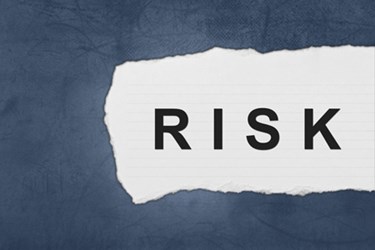Clinical Insights: "RBM Is The Biggest Game Changer Since EDC"

By Ed Miseta, Chief Editor, Clinical Leader

Mike McKay is the Associate Director of Operational Excellence for Shire Pharmaceuticals. He has been involved with clinical trials for more than 20 years, with the majority of that time spent in clinical operations. In his current position in the Operational Excellence department, McKay is focused on making Shire’s clinical trials leaner, meaner, and faster via process improvement, benchmarking performance, and implementing new technologies.
I recently spoke with him about his job, the challenges he faces, and the role risk-based monitoring (RBM) will play in changing the future of clinical research.
Ed Miseta: You recently explored opportunities to conduct an RBM pilot. What are your thoughts on it?
 Mike McKay: I believe RBM will be the biggest game changer to hit clinical operations since EDC (electronic data capture). It’s potential to increase quality and lower the time and cost of conducting clinical trials has only just begun to be explored. Think about it, why should we employ a traditional one size fits all monitoring approach when we know that there are good sites and bad sites and that only a small fraction of the total data is changed via source data verification? Resources should be focused on improving the data quality at the problem sites and we now have RBM platforms that are built to identify issues early so we can nip problems in the bud and correct bad habits.
Mike McKay: I believe RBM will be the biggest game changer to hit clinical operations since EDC (electronic data capture). It’s potential to increase quality and lower the time and cost of conducting clinical trials has only just begun to be explored. Think about it, why should we employ a traditional one size fits all monitoring approach when we know that there are good sites and bad sites and that only a small fraction of the total data is changed via source data verification? Resources should be focused on improving the data quality at the problem sites and we now have RBM platforms that are built to identify issues early so we can nip problems in the bud and correct bad habits.
From what I have gathered from my industry contacts, most companies are just now dipping their toes in the water, trying to figure out how to implement this methodology into their process. There are a smaller number of companies (mostly Big Pharma) that were early adopters of RBM, completed their pilots, and are moving into implementing RBM as the monitoring standard for their clinical trials.
Shire looked into possibly conducting a full RBM pilot based on the TransCelerate model. I also read other papers, did all of the necessary homework, and met with many of the service providers that offer RBM services. Some of your readers may not know that Shire has now focused much of its R&D resources on rare disease. Most rare disease trials have small sample sizes, and trials of that size are not ideal candidates for RBM. I found that with RBM you need at least 100 patients to justify all of the up-front work and costs of utilizing a RBM technology platform.
There is a lot of change management that comes along with RBM. With less than 100 trial participants, it is really difficult to justify the expense and all of the process change, such as modifying SOPs and establishing the key risk indicator (KRI) thresholds. Long story short, we really could not find a good pilot candidate because our R&D portfolio is focused on rare disease trials with most having small sample sizes.
Miseta: I think a lot of people would be surprised to hear that change management is a major issue.
McKay: Change management is definitely the biggest factor. Everyone I have talked to who has done RBM somewhat successfully will tell you to throw out your processes and start from scratch. They will also tell you it is necessary to have a culture that is willing to embrace the change. When people’s careers are being threatened, that can be very frightening. If you are a monitor, what you are hearing is that you will ultimately be doing less monitoring.
I experienced this first hand. I have gone out to sites and pitched this idea to CRAs and you can see the expression on their faces as they connect the dots. They think they will be monitoring less, therefore fewer monitors will be needed, and eventually they may not need me. At the end of the day, RBM should reduce the monitoring frequency but the need for more central/remote monitoring will increase thereby creating new roles and opportunities for people with good monitoring skills.
Miseta: Did you have any concerns about regulators or technology?
McKay: No, not at all. Sometimes the greatest risk is not taking one. The real value in RBM is looking at things from a more analytical perspective. That is a smart way to conduct trials and the regulators have published position papers stating they want industry to do this. EMA and FDA papers are imploring sponsors to utilize RBM because they think it is a better way. And from my perspective, it is a much better way.
I recently read your article on Trevena and their experiment with RBM. It was a very interesting article and as I read it I thought about how brave she (Ruth Ann Subach) was to attempt what she did. I attended DIA this year and I was amazed at the velocity of change going on with information systems within life science companies. Initially people were conducting RBM pilots with spreadsheets. This paradigm has drastically changed to where there are now systems that can do all of that for you. These are literally off the shelf solutions where you simply customize your thresholds for your KRIs and get up and running in a reasonable time.
For example, one of the core tenants of RBM has key risk indicators (KRIs) representing green, yellow, and red levels of risk. If you trip a red indicator, you need to take swift action. If it is yellow, you need to take a closer look at things. If it’s a green indicator, you generally assume things are good. These off-the-shelf, plug-and-play systems will make RBM much easier to implement and manage going forward. Most of the large CROs now have their own in-house RBM platforms that are pretty slick. There are also a number of niche RBM service providers that offer an innovative product with great visualizations that give incredible insight into the data.
Miseta: Many companies seem to be struggling with patient centricity. Is this a struggle for you?
McKay: That is another big buzzword right now that a lot of people at conferences are talking about. I have written many protocols and for me, patient centricity is all about getting management, medical staff, and key opinion leaders to devise a protocol that takes the patient perspective into account during the design process. Right now, when many sponsors write protocols, they may discount the patient and site as a key stakeholder and think of regulators and payers as the main stakeholders. That is not to say we have not made progress, Shire and other sponsors are now disclosing trial results and treatment assignments to trial participants via the clinical sites as an example. So people are starting to come around to patient centric thinking, it just takes some time to put it into practice.
In my opinion, Industry is guilty of making protocols too complex and what you sometimes end up with is a protocol that is trying to squeeze blood from a stone, because it attempts to be all things to all people. Tufts and Medidata have put out some research indicating that the total number of endpoints in Phase 3 has nearly doubled from 2002 to 2012 and this puts a burden on both patients and sites. What is often an afterthought is the role of the patient. When that patient comes in for their screening visit, it’s not uncommon for that person to be at the clinic for up to three hours. If the patient is a working adult with children, do you think they have three hours to sit in that clinic?
So for me, patient centricity is really about pretending you are that patient and asking how you would feel about what they are asking you to do. The patient takes 100 percent of the risk by taking an investigation therapy, donating their time, and making significant sacrifices to participate in research. In return, we often take that for granted. I think before any company launches a protocol, they should have it evaluated by someone at a site and allow a research coordinator to look at it and see if it is practical. If you are asking a patient to have a fasting blood draw in the afternoon or evening, we have to recognize that it is probably not practical and that compliance will be low. Your trial will may up with multiple protocol deviations that could confound your results. Protocols have to be practical to everyday life. You can’t think ahead to the end result and what the manuscript will say if you’re not first considering what you will be putting that patient through.
Miseta: Data analytics seems to be a struggle for a lot of companies. Are you seeing any interesting trends there?
McKay: Here again, the biggest trend is the velocity of the change that is occurring in the life sciences technology arena. Shire recently selected a technology vendor to help with generating visualizations that will provide great insight into understanding our data. You want to be able to see around corners, so understanding internal cycle times, trends, and how they relate to industry peers is very important to evaluate performance and address areas of concern. Every company has important data in their systems (EDC, IXRS, and CTMS). What we are attempting to do now is to connect the dots and make that information available on demand, so management can have a better command of the information and make timely decisions.
In the past, we would have to wait until the data got uploaded, massaged, and cleaned. Then, a month later, you would get the data. Data aggregation software such as Spotfire, Tableau, and Clik View will allow you to make real time decisions, minimize risks, and visualize data in a friendlier way. That is where we are trying to go.
Miseta: Do you have the expertise to do that in-house or do you need to acquire these resources?
McKay: Most of the Big Pharma companies have the resources on hand. Most probably have a whole department of people doing this, and those employees may possess both IT and clinical expertise. At Shire, our strategy is to stay lean and partner with the best service providers to help us with that challenge. We have a technology group in house but many of these data and IT projects are still outsourced to CRO partners. I have to think most small to mid-sized companies do not have those assets in-house.
Miseta: Are there any other trends you are following right now?
McKay: Working in operational excellence means innovation is very important to me. I always enjoy hearing about new approaches, successful case studies, and how other companies are innovating and deriving value in their workplaces. I think a major driver of that will be new mobile technologies hitting the market. I think wearables and mobile apps will continue to get a lot of attention, especially how companies will use technologies like smart phones and fit bits to collect data from patients. Not only will it facilitate data collection for companies, it will make that collection easier for patients, which ties back to the topic of patient centricity that we discussed earlier.
